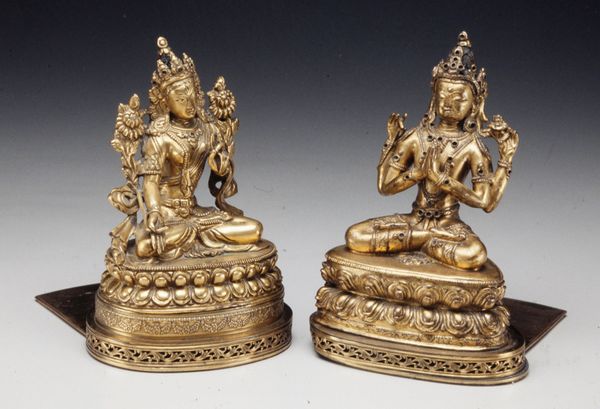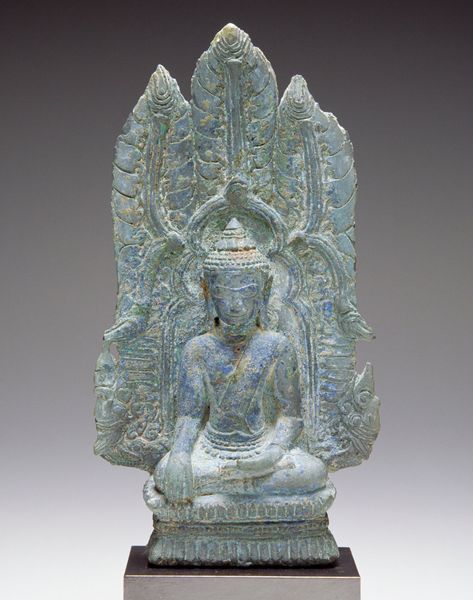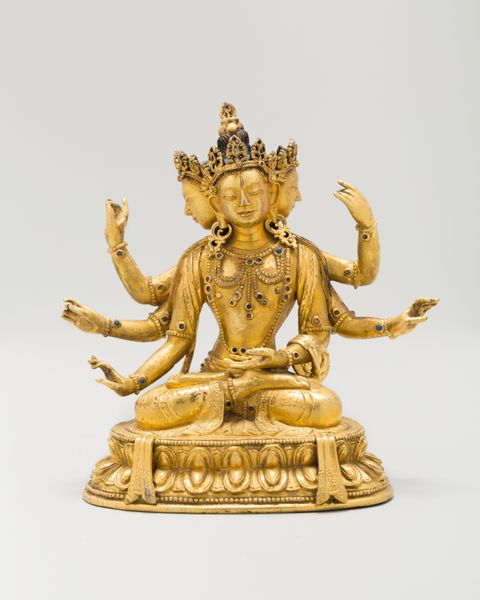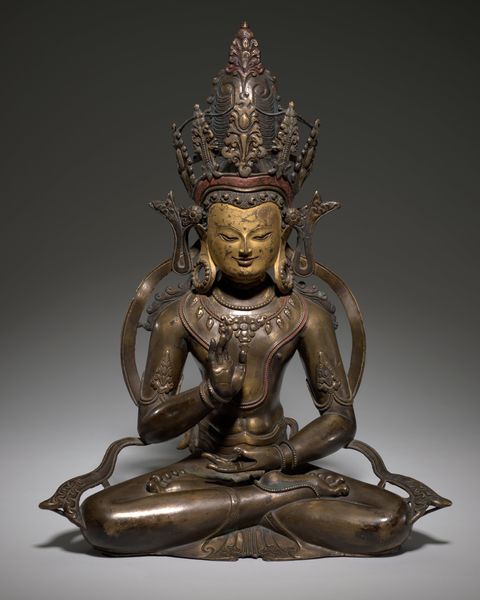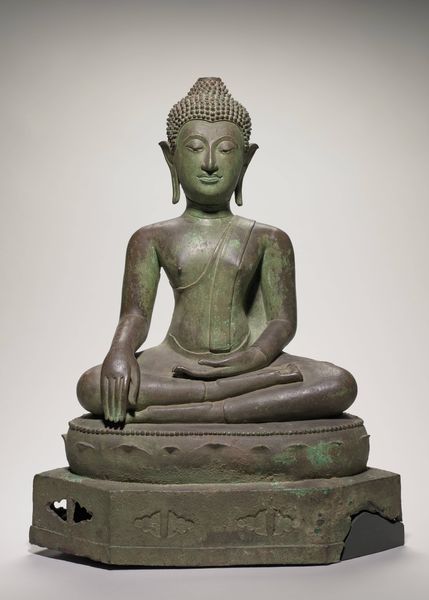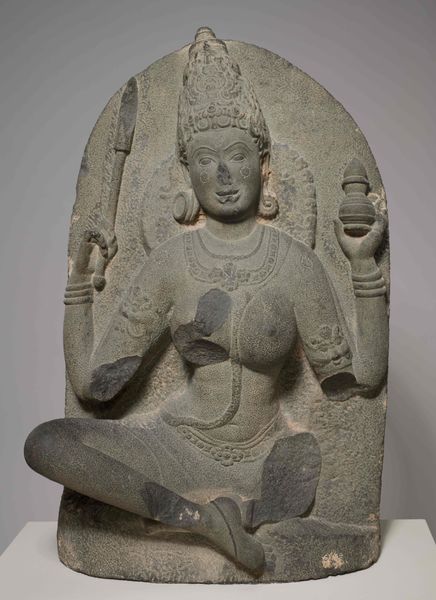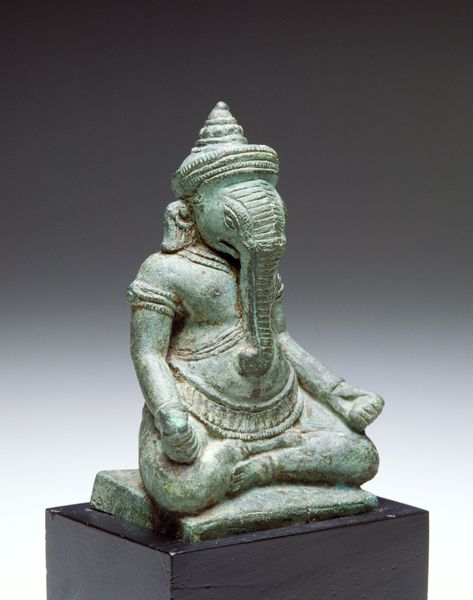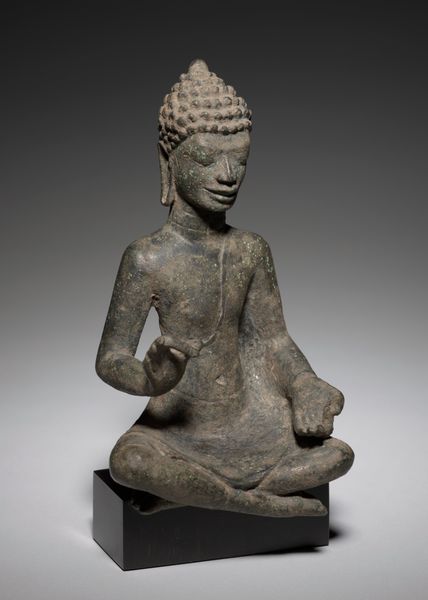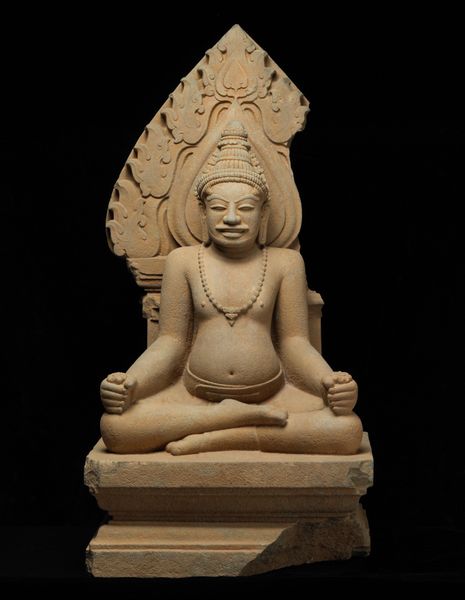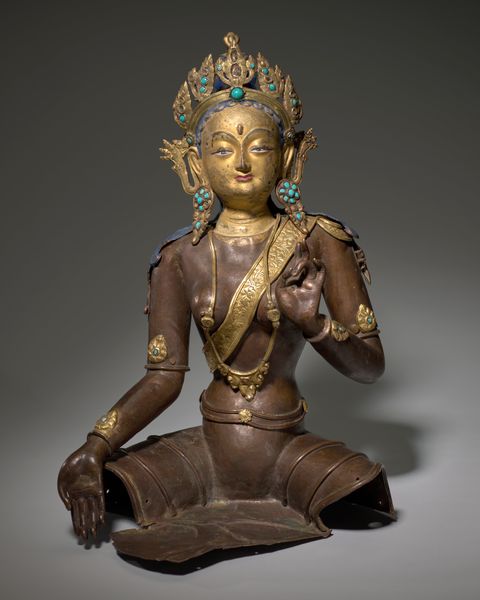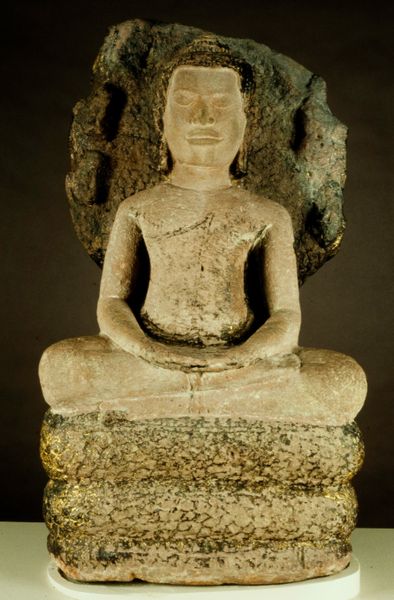
bronze, sculpture
#
sculpture
#
asian-art
#
bronze
#
ancient-mediterranean
#
sculpture
Dimensions: 23 1/4 x 26 1/4 x 13 in. (59.06 x 66.68 x 33.02 cm)
Copyright: Public Domain
Editor: We’re looking at “Somaskanda,” a bronze sculpture of the holy family made sometime in the 13th or 14th century. It's currently at the Minneapolis Institute of Art. The sculpture has such a serene, poised quality. How do you interpret the work in relation to its historical context? Curator: This sculpture is particularly fascinating when we consider the role of bronze casting in South Indian society at the time. Bronze sculptures like this weren't just religious icons, but active participants in temple rituals, often paraded through the streets, so consider it moving within a broader socio-political landscape, shaping religious experience. Editor: That’s fascinating. It really contextualizes the sculpture! What are some of the broader implications of these sculptures' movement through the public space? Curator: Well, the movement itself reinforces social hierarchies and religious authority. Consider who had access to these rituals, who participated in their creation and maintenance, and how these processions shaped collective identity. Does that prompt further thought about its reception? Editor: Definitely. It’s making me think about who commissioned the work, the intended audience and how this form of religious art intersected with the ruling powers. Would these have been exclusive displays for the elite or meant for wider audiences? Curator: Likely a complex blend, varying depending on specific times and locations. Exploring such factors enhances the artistic and cultural value, prompting critical thought about art's societal influence in the past, enriching our understanding and sparking modern-day conversations. Editor: It really gives you a new perspective. Now, I can appreciate it more as an object of faith, and also as a product of social power. Thanks!
Comments
minneapolisinstituteofart about 2 years ago
⋮
Shiva and his wife Uma sit next to each other on double lotus pedestals, between them a residual remnant of their small child, Skanda, now missing from the magnificent bronze. The standard format—known as Somaskanda—arose as early as the 6th century in temples from Tamil Nadu, and remains Shiva’s main manifest form today. In south Indian temples, bronze images play a huge role in devotional practice, where they are treated as living embodiments of the gods. The holes in the base indicate that this particular bronze would have been carried in processions outside the temple grounds. Priests dressed the gods in fine clothing, adorned them with flowers, and assembled an entourage of musicians and dancers to accompany them on a procession to bless the devotees who congregated along city streets.
Join the conversation
Join millions of artists and users on Artera today and experience the ultimate creative platform.
